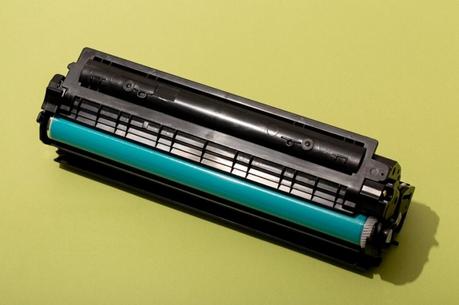
Maintaining peak printing quality in your HP printer hinges upon regular ink cartridge replacements. This comprehensive guide goes beyond offering step-by-step instructions for changing ink cartridges; it delves into exploring the feasibility and advantages of refilling HP ink cartridges. By understanding the process of cartridge replacement and the potential benefits of refilling, such as reduced costs and minimized environmental impact, you'll not only sustain quality but also promote cost-effectiveness and environmental sustainability. Whether you're seeking clarity on cartridge replacement or considering eco-friendly printing solutions, this guide aims to provide comprehensive insights and actionable steps for your HP printer maintenance.
Importance of Changing Ink Cartridges
The importance of timely ink cartridge changes in your HP printer goes far beyond the necessity of ink for producing prints. Low ink levels often result in faded or inconsistent prints, adversely affecting color vibrancy and overall print clarity. Moreover, persisting with printing on low or empty cartridges poses a significant risk to the printer's printhead, potentially leading to expensive repairs or necessitating a complete printhead replacement. By regularly changing ink cartridges, the printer sustains its efficiency and reliability, consistently delivering high-quality prints and ensuring prolonged optimal performance.
How to check ink levels on HP printer?
To check the ink levels on an HP printer, start by accessing the printer's control panel or software interface on your computer. Navigate to the printer settings or maintenance section, where you'll find an option for ink or toner levels. Within this section, the printer will display a visual representation or a percentage indicating the remaining ink levels for each cartridge. Some HP printers also provide pop-up alerts or notifications on the computer screen when ink levels are low, prompting users to check or replace cartridges. Additionally, certain printer models offer a dedicated ink level gauge on the printer's display panel, allowing users to directly view the remaining ink levels without accessing the software interface.
Determining the Correct Ink Cartridge
The initial step in this process involves identifying the specific ink cartridge required for your HP printer model. This information is crucial for acquiring the compatible replacement. You can easily find this detail in the printer manual or on HP's official website.
Preparing for Ink Change
Before initiating the ink change process, ensure the printer is powered on. Locate the ink cartridge door, recognizing that its position may vary based on the specific model of your HP printer. Once accessed, proceed to carefully unpack the replacement ink cartridge, following the provided instructions diligently. Remove any protective coverings as directed, preparing the new cartridge for installation into your printer.
Steps for Changing Ink
Changing ink cartridges in your HP printer involves a straightforward process that ensures optimal printing quality and performance. Here's a step-by-step guide:

- Turn on the printer: Make sure the printer is powered on before you start.
- Access the ink cartridges: Open the printer cover or access door. For most HP printers, this involves lifting the top cover or accessing a compartment usually located at the front or side of the printer.
- Wait for the cartridges to move to the center: Once you open the ink cartridge access area, the cartridges will often move to the center for easy access. Wait for the printer to stop and be silent before proceeding.
- Remove the old cartridge: Press down gently on the cartridge you want to replace and then pull it out of its slot towards you. Be careful not to touch the contacts or nozzles.
- Unpack the new cartridge: Take the new ink cartridge out of its packaging. Remove any protective tape or plastic covering from the cartridge.
- Install the new cartridge: Slide the new cartridge into the slot, pushing it forward until it clicks into place. Ensure it's securely seated.
- Repeat if necessary: If your printer uses multiple cartridges (e.g., separate black and color cartridges), repeat the process for each one that needs replacement.
- Close the ink cartridge access door/cover: Gently close the cover or door of the printer.
- Print a test page: Some printers will automatically align the cartridges, while others may require you to initiate a test print from the printer menu. This helps ensure the new cartridges are functioning properly.
Can I Refill HP Printer Ink Myself?
Refilling HP printer ink cartridges by yourself is a viable option, offering potential cost savings compared to purchasing new cartridges. Refill kits, often containing ink bottles, syringes, and instructions, facilitate this process. However, it's crucial to proceed with caution and precision as improperly refilling cartridges can result in leaks, compromised print quality, or even damage to the printer. Following the provided instructions meticulously and maintaining cleanliness during the process is paramount to minimizing risks and sustaining optimal print quality. While DIY refilling offers economic benefits, it requires careful attention to detail to ensure successful and satisfactory results.
Conclusion
In conclusion, regular ink cartridge replacements are vital for sustaining print quality and extending the lifespan of your HP printer. Understanding the cartridge replacement process and the importance of monitoring ink levels empowers users to maintain optimal print standards and prevent potential printer damage. While considering the feasibility of DIY ink cartridge refilling for cost-effectiveness, meticulous attention to detail is essential to avoid issues like leaks or compromised print quality. By following these guidelines, users can ensure consistent high-quality prints, and cost-effectiveness, and contribute to environmental sustainability in their printing practices.

